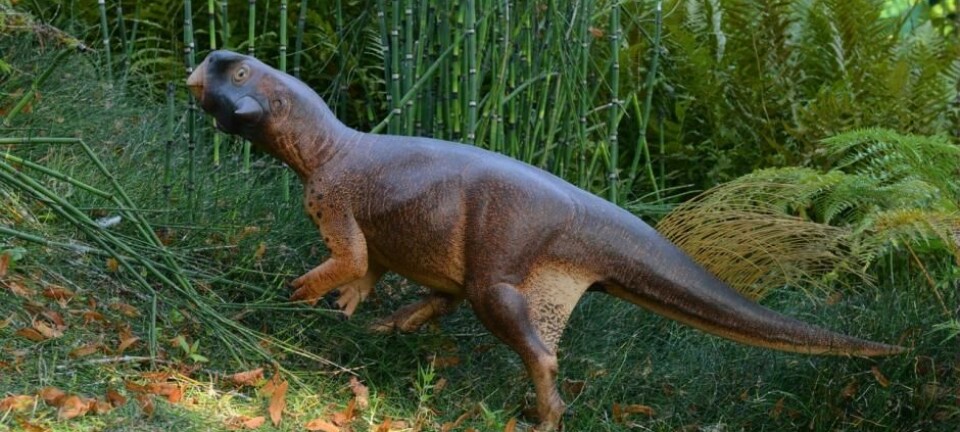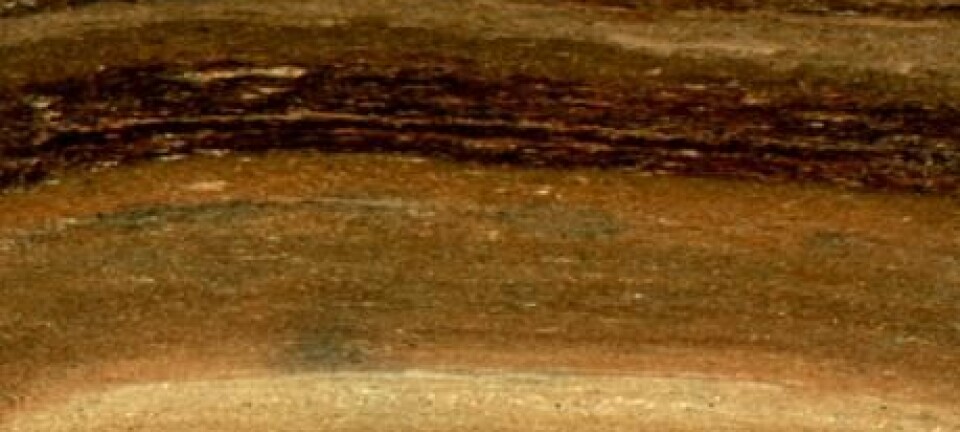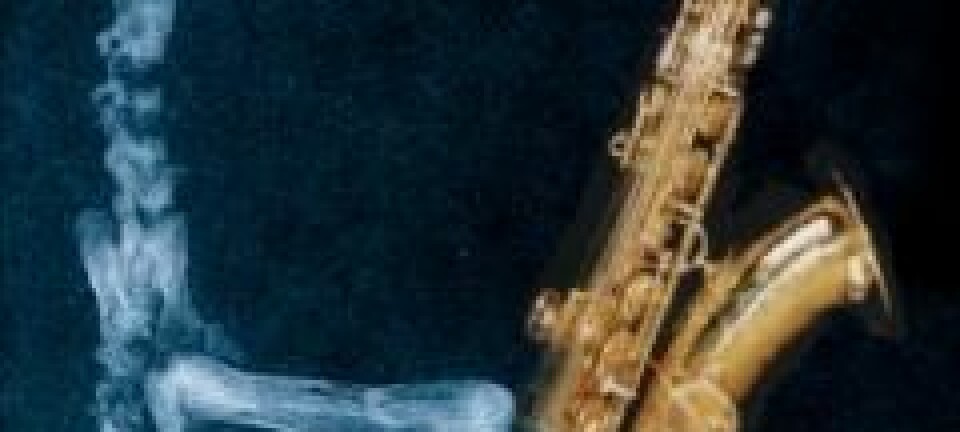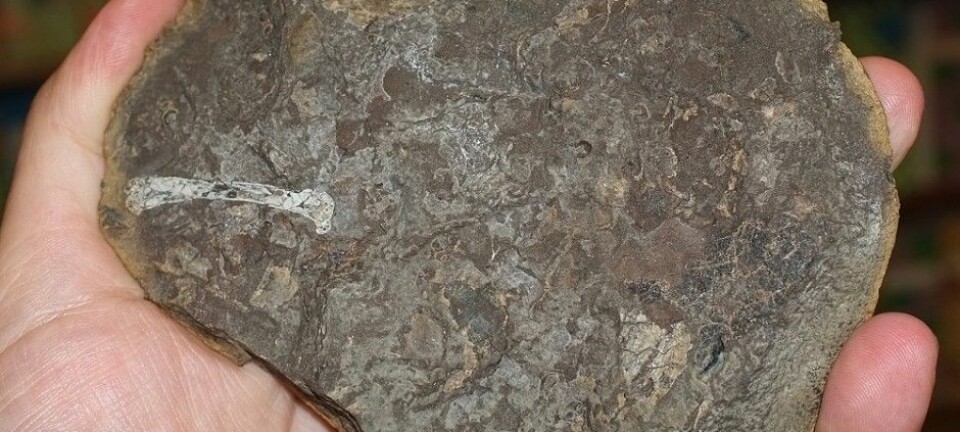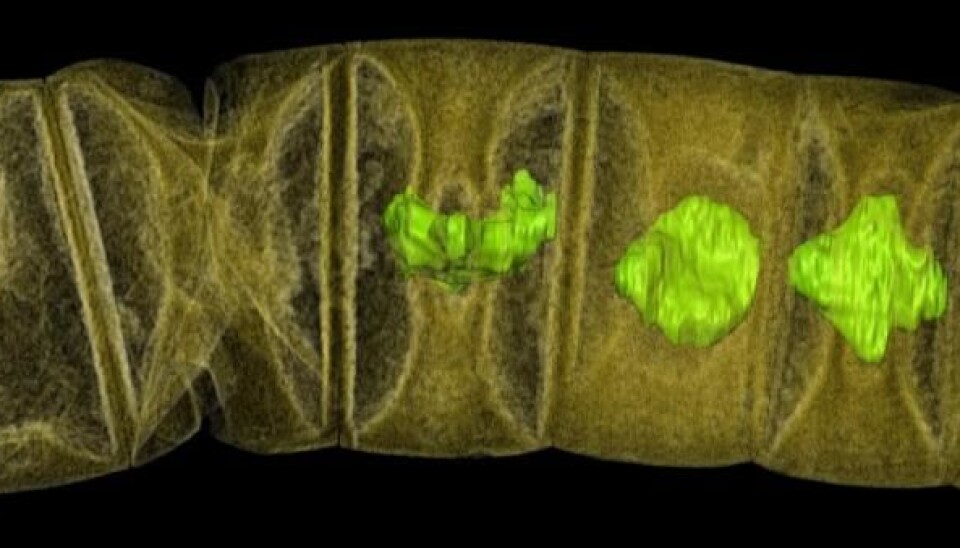
World’s oldest fossil plants could rewrite life's early history
Scientists have discovered the fossilised remains of 1.6 billion year-old red algae from India. Advanced multicellular life began much earlier that previously thought and the timing of the tree of life should be revised, they say.
In the autumn of 2015, Ph.D. student Therese Sallstedt from The Swedish Museum of Natural History, suddenly jumped up from her microscope.
“I was so excited that I had to walk around the building three times before I could tell my supervisor what I had seen,” says Sallstedt.
In the thin sections of rocks that Sallstedt was studying, the fossilised mats of cyanobacteria from Chitrakoot in Central India contained well-preserved cells of far greater complexity than the surrounding bacteria.
What she saw reminded her of some of the earliest plants—600 million year-old algae from China. But these Indian rocks were much older—1.6 billion years old, making these the oldest plant-like fossils ever seen.
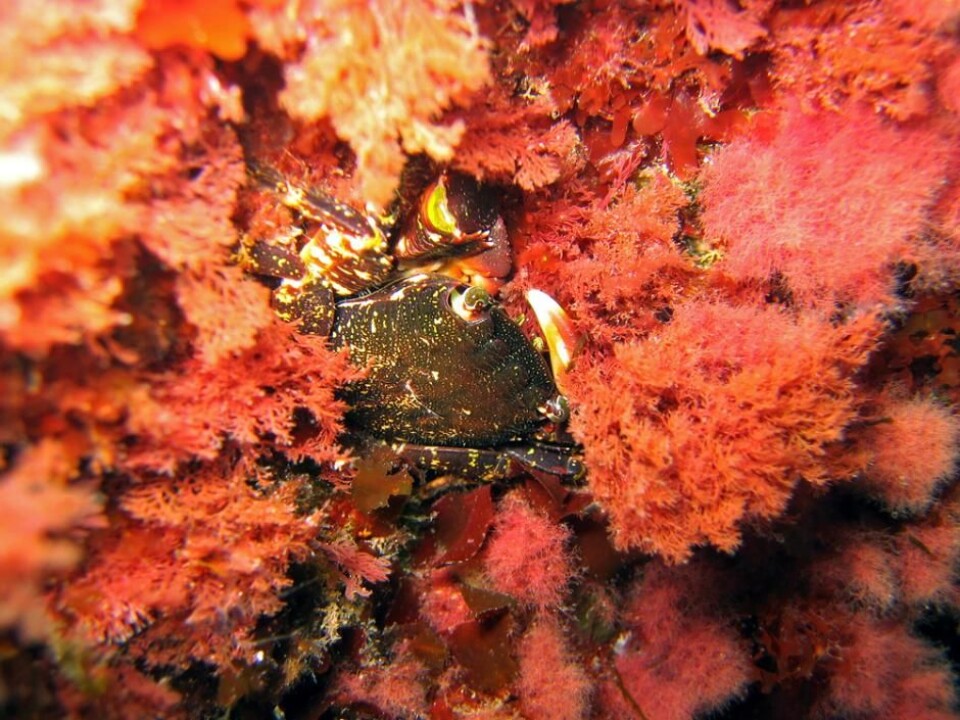
The results are now published in the scientific journal PLOS Biology, where Sallstedt and her supervisor, professor emeritus Stefan Bengtson from The Swedish Museum of Natural History, have described not one, but two types of plant-like fossils—the oldest known such examples in the world.
Colleague: “Nothing short of fantastic”
“This study is nothing short of fantastic. They show the inner structures of 1.6 billion year-old cells from multicellular complex tissue. It’s science fiction, except that it’s real,” says Emma Hammarlund, who studies the development of life at the University of Southern Denmark.
“But besides that, they’ve discovered the oldest fossils that resemble modern red algae. The new fossils shift our estimate for the origin of our last common ancestor of all eukaryotes [complex cells] further back in time,” says Hammarlund, who was not involved in the new study.
Read More: Lack of oxygen did not hold back evolution of complex life
Discovery rewrites the early history of the development of life on Earth

The origin of complex cells (eukaryota) is a landmark in the history of the Earth, because it is from these that all complex multicellular organisms—plants, fungi, and animals—descended.
The new fossils push our own ancestry further back in time and mean that scientists now have to recalibrate the early branches of the tree of life.
“Put simply, these 1.6 billion year-old fossils of red algae are forcing us to reconsider the timing of when advanced multicellular life arose on Earth. They tell us that it happened much earlier than previously thought,” says Sallstedt.
Read More: Fossil DNA reveals new theory on colonisation of America
Indian colleague accused of fraud
This dream discovery, paradoxically, started out as a nightmare.
“It began in 2006 when I was contacted by my Indian colleague Rafat Azmi, who had been accused of research fraud,” says Bengtson.
Azmi had been accused of moving fossils from one place to the Indian rocks and asked Bengtson to come and examine the rocks as an impartial party.
Bengtson flew to India and collected samples himself, which he sent back to Sweden to study further. He confirmed Azmi’s discovery. But where Azmi had thought he had discovered fossils from the Cambrian (around 500 million years ago), Bengtson and his colleagues in Sweden revealed that the rocks were much older.
What Azmi had identified as worm tubes and animal embryos, were in fact thread-like algae and fossilised gas bubbles, trapped under the slimy mats of ancient bacteria.
These results were published in 2009 in the scientific journal PNAS, and it was these early bacterial colonies that Sallstedt wanted to study further.
In this earlier study, Bengtson had already found long strands of algae-like structures that could be eukaryotes. Sallstedt has now found another type of red algae, a more “fleshy” plant-like fossil.
Read More: Shelved fossil was a Svalbard jewel
Microscopic internal structures intact after an unimaginable length of time
The fossils are so amazingly well preserved that small, delicate, microscopic internal structures have survived until today.
“The pictures in the article speak for themselves,” says Tais Wittchen Dahl, an assistant professor at the Natural History Museum at the University of Copenhagen, Denmark. “Many details of the organisms are remarkably well preserved. It’s unique for fossils of that age,” he says.
The fossils reveal internal eukaryotic structures, such as features in the dividing walls between the individual cells that are typical of multicellular organisms such as red algae. The scientists have also observed platelets, which are structures of the chloroplasts that synthesise carbohydrates in the cell, and are also observed today in several types of algae.
The two new species and genera of red algae have been dubbed Rafatazmia (in honour of the Indian scientist Rafat Azmi) and Ramathallus (Latin for meaty branch), respectively.
Read More: Discovery in the Bay of Aarhus can solve the puzzle of our primordial origin
Some of the earliest multi-celled organisms
“What’s especially interesting here is that the microfossils represent red algae, some of the earliest multicellular organisms on Earth,” says Dahl.
“Multicellular life has developed many times in history and only among the eukaryotes, for example in plants, fungi and animals. The new study has pushed the calculation of when the first eukaryote cells originated on Earth, because the oldest fossilised red algae are used to calibrate the “molecular clock”,” he says.
The molecular clock indicates the time in the history of life on Earth when certain lineages diversified, based on the generic information of living organisms. And this clock is anchored by dated fossils.
Read More: World’s oldest fossils discovered in Greenland
Updates our picture of the evolution of life on Earth
Previously the oldest known fossilised red algae, came from Canada. They are called Bangiomorpha and are around 1.2 billion years old.
Molecular biologists had difficulty accepting the age of these fossils and they were largely ignored as a strange oddity.
“But our new data make it difficult to reject the existence of red algae, not just 1.2 billion years ago but 1.6 billion years ago,” says Bengtson.
If they are right, it means that the molecular clock must be recalibrated, and our view of the development of complex life may have to face a proper audit.
“Already with the previously oldest fossil of red algae (Bangiomorpha) included into the calculations, which most studies avoid, estimate of our last eukaryotic common ancestor ends up at between 3.8 and 4.2 billion years ago, and now we have these” says Hammarlund.
This is a not long after the first single-celled organisms.
Read More: How scientists made this 95 million-year-old octopus look good
Study raises many more questions
Bengtson cannot say precisely how the tree of life should be recalibrated. For now it would be guesswork, he says. But there is no doubt that the origin of eukaryota and complex life occurred much earlier than we currently estimate.
This raises many more questions. For example why did multicellular life appear relatively quickly, and yet multi-celled, complex animals did not appear until the Cambrian, 500 to 600 million years ago.
“The great riddle, which is more than a century old, is why did the “Cambrian explosion” of multicellular organisms take so long to happen? Now we see that multicellular complex organisms already existed one billion years earlier, and so it certainly wasn’t held back because of the lack of this kind of organism,” says Bengtson.
--------------
Read more in the Danish version on Videnskab.dk
Translated by: Catherine Jex
Scientific links
- "Three-dimensional preservation of cellular and subcellular structures suggests 1.6 billion-year-old crown-group red algae", PLoS Biology (2017)
- 'The controversial “Cambrian” fossils of the Vindhyan are real but more than a billion years older' (2009), PNAS
